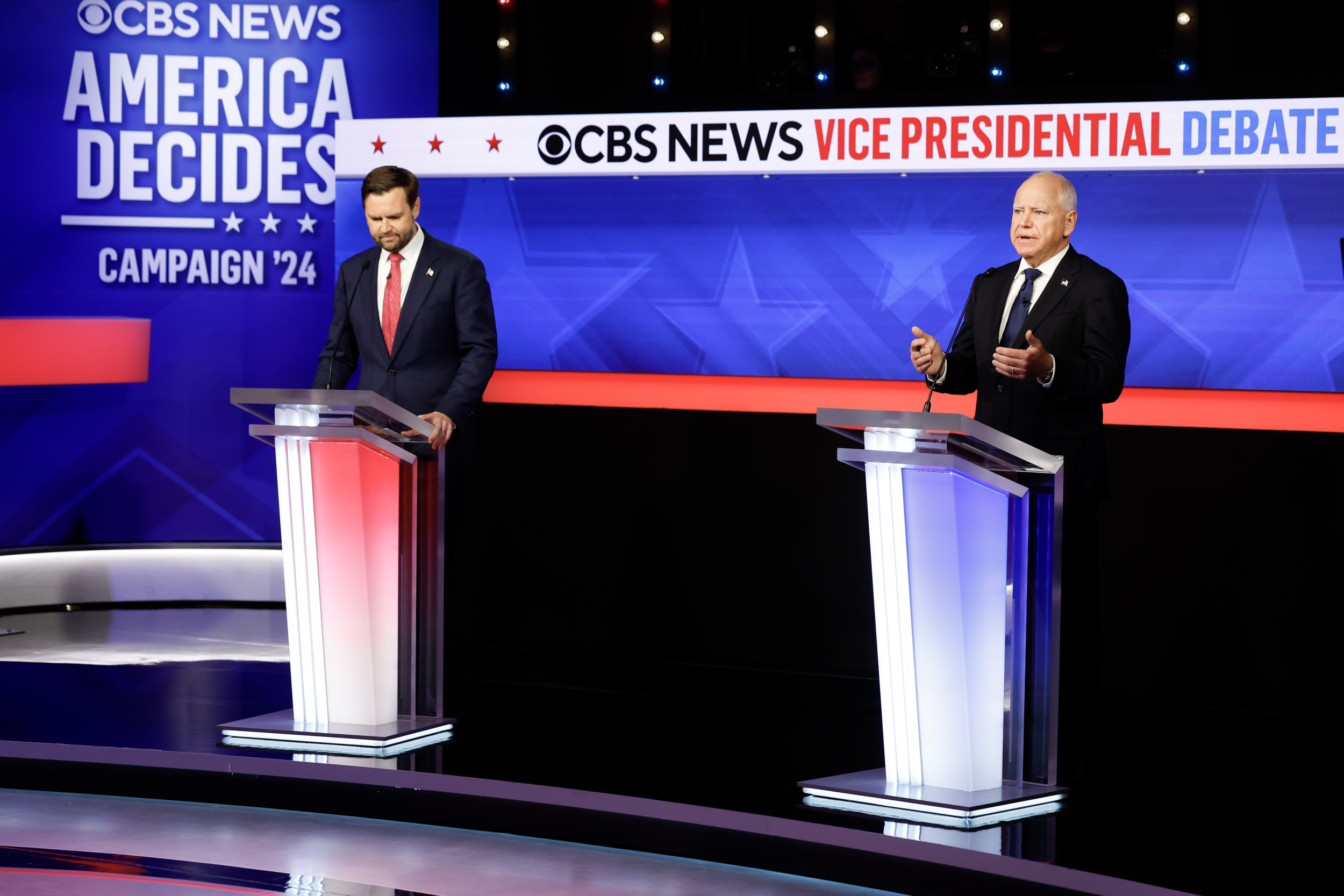JD Vance and Tim Walz engaged in a respectful and policy-driven vice presidential debate on Tuesday night, aiming to generate momentum in a tightly contested race where opinions are largely unchanged.
Currently, Kamala Harris holds a modest lead in national polls after stepping in for President Joe Biden since July. While she garnered some support following her debate against Trump, the critical swing states show a fairly even contest.
This debate unfolded during a tumultuous week, marked by the devastation of Hurricane Helene across the Southeastern U.S., affecting pivotal states like Georgia and North Carolina. Additionally, rising tensions in the Middle East and ongoing dockworker strikes could complicate the political landscape further.

Chip Somodevilla/Getty Images
The 2024 political scene has been unusual, with candidates typically participating in multiple debates. So far, Trump and Harris have only squared off once, which might make this vice presidential debate a key moment to showcase their respective platforms on significant issues like the economy and immigration.
Vance and Walz Focus on Substance
The tone of the Vance-Walz debate was a refreshing contrast to the earlier Harris-Trump clash, where personal attacks overshadowed substantial discussion. Both candidates kept it civil and focused on policy, recognizing their opponent’s good intentions while disagreeing on solutions.
Neither candidate made serious mistakes, adhering to the primary rule of vice presidential debates: “do no harm.” They discussed contentious issues like a bipartisan border bill, demonstrating both conflict and commonality over domestic policies.
Both candidates voiced contrasting views but also found areas of agreement, such as the need for affordable housing and policies supporting local job retention. “I actually agree with Tim Walz,” Vance noted, advocating for housing solutions that prioritize people over profit.
As the debate neared its close, tensions rose when discussing democracy, particularly the events surrounding January 6. Walz criticized Vance’s handling of the topic, asserting that they are “miles apart” on the matter.
Vance’s Tactful Approach
Despite his reputation as a fiery conservative, Vance tempered his rhetoric, aiming for a more moderated appeal during the debate. He successfully focused on policy instead of getting drawn into emotional conflicts, a wise change from Trump’s previous performance.
He often linked his positions to personal experiences, making them relatable to viewers. One notable moment involved discussing reproductive rights, connecting them to a friend’s experience with abortion.
Leveraging Middle Eastern Tensions
The debate opened with a dialogue around Middle Eastern policy, following a significant attack on Israel by Iran. Vance capitalized on this backdrop, suggesting it reinforces Trump’s claims of a deteriorating global safety under Biden’s leadership.
Walz responded by critiquing Trump’s foreign policy, painting it as chaotic, while Vance defended the previous administration, praising Trump’s tactics that staved off new foreign conflicts.
Vance Courts Trump’s Approval
Vance’s alignment with Trump came through clearly, positioning himself as a loyal supporter. His approach earned real-time praise from Trump on social media as he highlighted Trump’s policies, further solidifying his role as the former president’s advocate without appearing excessively subservient.
Walz’s Central Strategy
Walz used the debate to attract moderate voters, particularly those in swing states, by emphasizing the more centrist aspects of both his and Harris’ platforms. He praised Harris’ energy policy and mutual support for reasonable gun legislation, aligning with voters’ interests without diving into more progressive stances.
This strategy is essential for Walz’s role in appealing to centrist voters, especially in states like Michigan, Pennsylvania, and Wisconsin, which are critical for Harris’ campaign.
